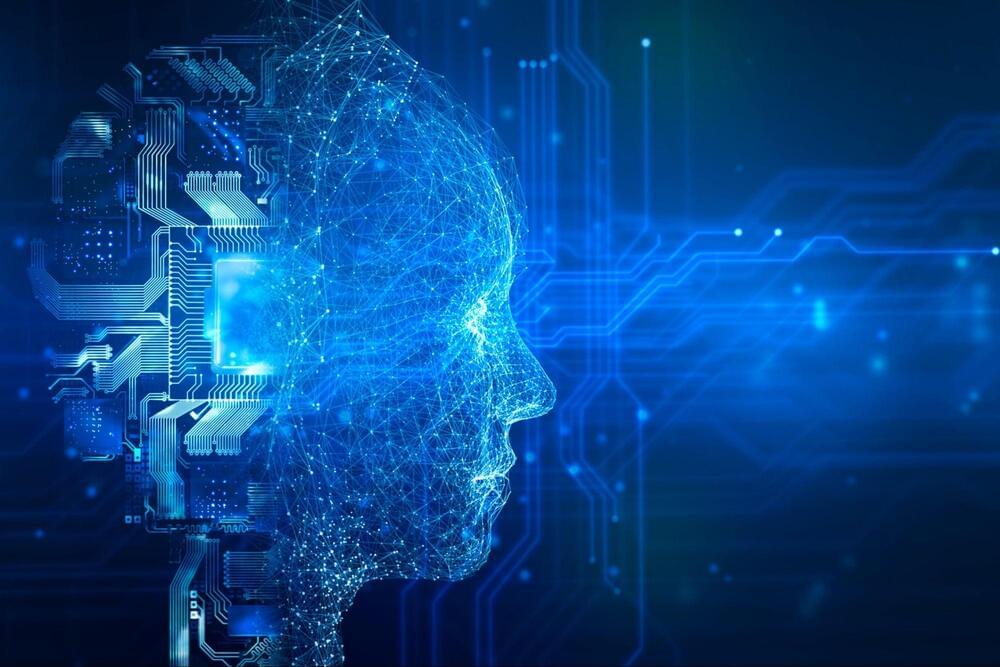
Category: singularity – Page 49


We already live in the singularity
“The Singularity” is a term coined by John von Neumann, a major figure in the history of computer science. The concept refers to a hypothetical time when computers become more intelligent than humans and can improve themselves without our input. Imagine a run-away reaction where artificial intelligence is able to improve itself. This improved self is able to further improve itself. With each improvement the rate at which…
Why We’re Making the Grace Humanoid Eldercare Robot: Response to Russell Brand
Sooo… the inimitable Russell Brand posted a video a few weeks ago saying some amusing but largeuly inaccurate and misleading things about the Grace humanoid eldercare robot we’re making in our Awakening Health project (http://awakening.health).
Russell’s video is here: https://www.youtube.com/watch?v=SDD7M1OWBDg.
I recorded this video as a sort of response, to set the record straight a bit and explain why Russell is wrong about Grace and what is the actual nature of the Awakening Health project and what are the motivations behind it!
The three main points I make in the video (but with more color and detail, so do watch the video if you’re interested!!) are:
1) Grace is there to help nurses and nursing assistants not replace or obsolete them. When she becomes an AGI she still won’t obsolete the need for human connection and human care. Elderly folks need extra help and attention right now and Grace can help. My grandfather spent the last 5 years or so of his life in an eldercare facility; it was a pretty good one, but he was still lonely and confused a lot of the time and certainly could have benefited greatly from a robot like Grace.
2) Awakening Health is a JV of Hanson Robotics and: SingularityNET (http://singularitynet.io), whose purpose is to democratize & decentralize AI. It’s all about data sovereignty and putting the control over the AI in the hands of the humans who are training and using the AI. Not about centralized tech oppression of the elderly or anyone else as Russell alludes. Actually I think I see very closely eye to eye w/ Russell Brand on the dangers of Big Tech and Big Government, though I probably more clearly see the path to a solution than he does (hint: it has to do with blockchain-meets-beneficial-AGI).
How we could Time Travel through a (special) black hole — Back to the PAST!
Get your SPECIAL OFFER for MagellanTV here: https://try.magellantv.com/arvinash — It’s an exclusive offer for our viewers! Start your free trial today. MagellanTV is a new kind of streaming service run by filmmakers with 3,000+ documentaries! Check out our personal recommendation and MagellanTV’s exclusive playlists: https://www.magellantv.com/genres/science-and-tech.
Chapters.
0:00 — You are a time traveler.
2:32 — Spacetime & light cone review.
6:15 — Flat Spacetime equations.
7:03 — Schwarzschild radius, metric.
8:42 — Light cone near a black hole.
10:15 — How to escape black hole.
10:39 — Kerr-Newman metric.
11:34 — How to remove the event horizon.
11:50 — What is a naked singularity.
12:20 — How to travel back in time.
13:26 — Problems.
Summary.
Time travel is nothing special. You’re time traveling right now into the future. Relativity theory shows higher gravity and higher speed can slow time down enough to allow you to potentially travel far into the future. But can you travel back in time to the past?
In this video I first do a quick review of light cones, world lines, events, light like curves, time-like curves, and space-like curves in this video so that you can understand the rest of the video.
A space like-world line means that the object has to travel faster than light. But moving anything to the speed of light requires an infinite amount of energy to accelerate. So this is not possible.
Going faster than the speed of light can create scenarios that allow you to travel back in time. But since this is not physically possible, we need to figure out a clever manipulation of space time. This means we have to solve Einstein’s equations of General relativity.
Do Androids Dream of Electric Sheep? Dr. Ben Goertzel with Philip K. Dick at the Web Summit 2019
Dr. Ben Goertzel with Philip K. Dick at the Web Summit in Lisbon 2019.
Ben showcases the use of OpenCog within the SingularityNET enviroment which is powering the AI of the Philip K. Dick Robot.
We apologise for the poor audio quality.
SingularityNET is a decentralized marketplace for artificial intelligence. We aim to create the world’s global brain with a full-stack AI solution powered by a decentralized protocol.
We gathered the leading minds in machine learning and blockchain to democratize access to AI technology. Now anyone can take advantage of a global network of AI algorithms, services, and agents.
Website: https://singularitynet.io.


The Only Artificial Intelligence that can Learn — Deepmind Meta-Learning
Artificial Intelligence’s biggest Problems is their inability to keep on learning after they’ve completed their training. But now, Google’s Deepmind has created a Meta-Learning AI which keeps on learning and improving indefinitely without any Human supervision. Deepmind created the AI Game: Alchemy, which is a chemistry-based game for AI Agents to play and improve in. But Artificial Intelligence improving without limits also puts some concerns into AI researchers focused on deep learning.
There has been rapidly growing interest in meta-learning as a method for increasing the flexibility and sample efficiency of reinforcement learning.
–
If you enjoyed this video, please consider rating this video and subscribing to our channel for more frequent uploads. Thank you! smile
–
TIMESTAMPS:
00:00 The Ultimate kind of AI?
01:02 What is Meta-Learning in AI?
02:24 Alchemy AI Agent.
04:02 How Meta-Learning solved AI Problems.
06:32 What are the dangers of this AI?
08:29 Last Words.
–
#ai #metalearning #singularity
How Artificial Intelligence is Outsmarting Human Scientists
The most intelligent AI Scientists in the world are becoming increasingly worried about Artificial Intelligence programs becoming more unpredictable and incomprehensible as they become more powerful. AI is also overtaking powerful positions in the government, healthcare and defense which could prove dangerous as an Artificial Super Intelligence is coming very close as the Singularity approaches in the future of 2045. People like Elon Musk and Ray Kurzweil have long warned us about AI beating Humans in anything we can imagine. Nvidia and Meta are also working on specially made hardware and software in the form of pytorch and 2022 GPU’s. Artificial General Intelligence is a real dangers and here are some solutions to it.
–
TIMESTAMPS:
00:00 The Dawn of incomprehensible AI
01:33 The Dangers of Artificial Intelligence.
03:03 A Possible solution.
04:23 What ASI means for Society.
07:15 So, is all hope lost?
09:03 Last Words.
–
#ai #asi #agi

We now know the big bang theory is (probably) not how the universe began
The Big Bang still happened a very long time ago, but it wasn’t the beginning we once supposed it to be.
Where did all this come from? In every direction we care to observe, we find stars, galaxies, clouds of gas and dust, tenuous plasmas, and radiation spanning the gamut of wavelengths: from radio to infrared to visible light to gamma rays. No matter where or how we look at the universe, it’s full of matter and energy absolutely everywhere and at all times. And yet, it’s only natural to assume that it all came from somewhere. If you want to know the answer to the biggest question of all — the question of our cosmic origins — you have to pose the question to the universe itself, and listen to what it tells you.
Today, the universe as we see it is expanding, rarifying (getting less dense), and cooling. Although it’s tempting to simply extrapolate forward in time, when things will be even larger, less dense, and cooler, the laws of physics allow us to extrapolate backward just as easily. Long ago, the universe was smaller, denser, and hotter. How far back can we take this extrapolation? Mathematically, it’s tempting to go as far as possible: all the way back to infinitesimal sizes and infinite densities and temperatures, or what we know as a singularity. This idea, of a singular beginning to space, time, and the universe, was long known as the Big Bang.